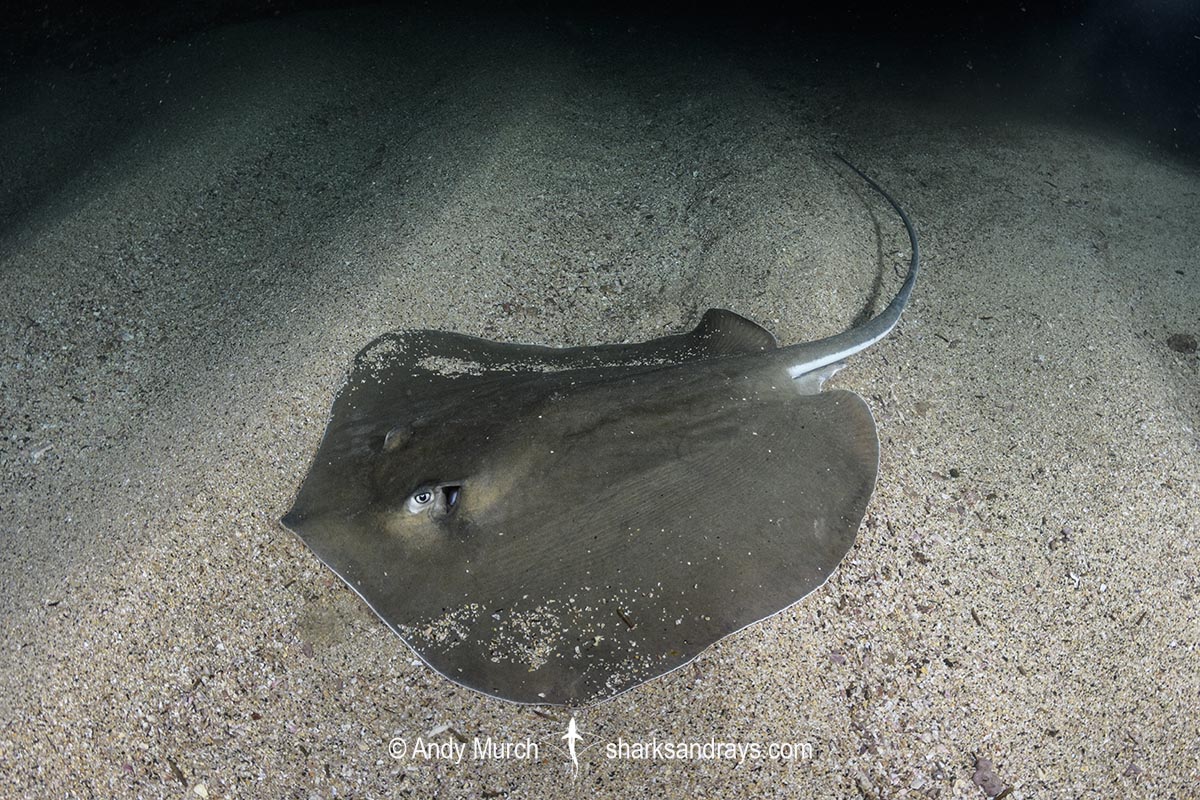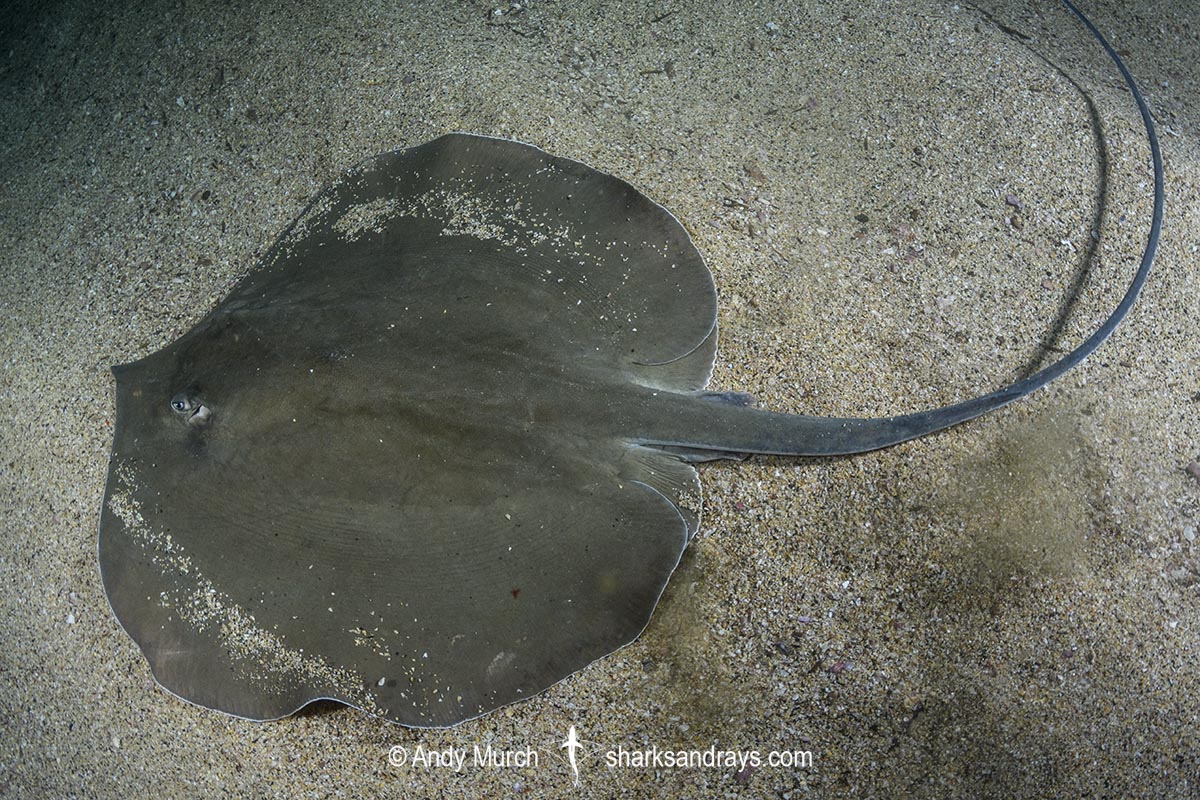Common name(s)
Pearl Whipray, Pearl Stingray.
Identification
A medium sized stingray with a rounded or ovoid disc. Disc length equal to width. Snout elongate, obtusely angular, with a narrowly pointed tip. Anterior margins of disc undulate; deeply concave near tip of snout. Pectoral fin apices broadly rounded. Pelvic fins small, with narrowly rounded apices.
Eyes large and protruding. Snout length approximately 2x combined eye and spiracle length. Mouth narrow with 5 oral papillae. Upper jaw somewhat undulate. Labial furrows pronounced. Skirt-shaped nasal curtain with a finely fringed posterior margin. Nostrils oval shaped.
Denticle band present on central third of disc in adults. 1-2 flattened ‘pearl-like’ thorns at mid-shoulder. Tail slender; length 1.5-2.4 x disc width. One caudal sting usually present. Long, low ventral finfold.
Colour
Dorsum and tail mostly plain grey to olive brown. Dusky shadow below eye and spiracle. Subtle golden patch in front of eye and behind spiracle. Very thin white margin visible on disc. Tail white or pale laterally. Ventrum white or pale, sometimes with a dusky margin. Ventral finfold dark.
Size
Maximum recorded disc width 28cm. From personal observation in Senegal, this ray clearly attains a much greater size; probably 80cm disc width.
Habitat
Tropical/subtropical seas. The pearl whipray is found in river estuaries and on sandy substrates often near rocky reef. Demersal in shallow bays and down to 60m.
Distribution
Coastal eastern tropical Atlantic from Mauritania to Angola.

Conservation Status
NEAR THREATENED
The pearl whipray is caught incidentally and in directed demersal trawl, line gear, set net, and trammel net fisheries throughout its range. Where landed, the meat is consumed locally. Although pearl whiprays remain relatively abundant, catch statistics indicate that they have undergone a population reduction of 20–29% in the last 15 years. If this trend continues, they will soon meet the criteria to be listed as ‘Vulnerable’.

Reproduction
Viviparous. Litter size unknown.
Diet
Probably feeds on invertebrates.
Behavior
Unknown. Seen at night on reefs around Dakar implying that it may be active nocturnally.
Reaction to divers
Fairly easy to approach but will eventually bolt.
Diving logistics
Although present throughout much of West Africa, the only area where this species has been recorded by divers is off Dakar in Senegal. This may be partly to do with the limited diving infrastructure in the entire region.


